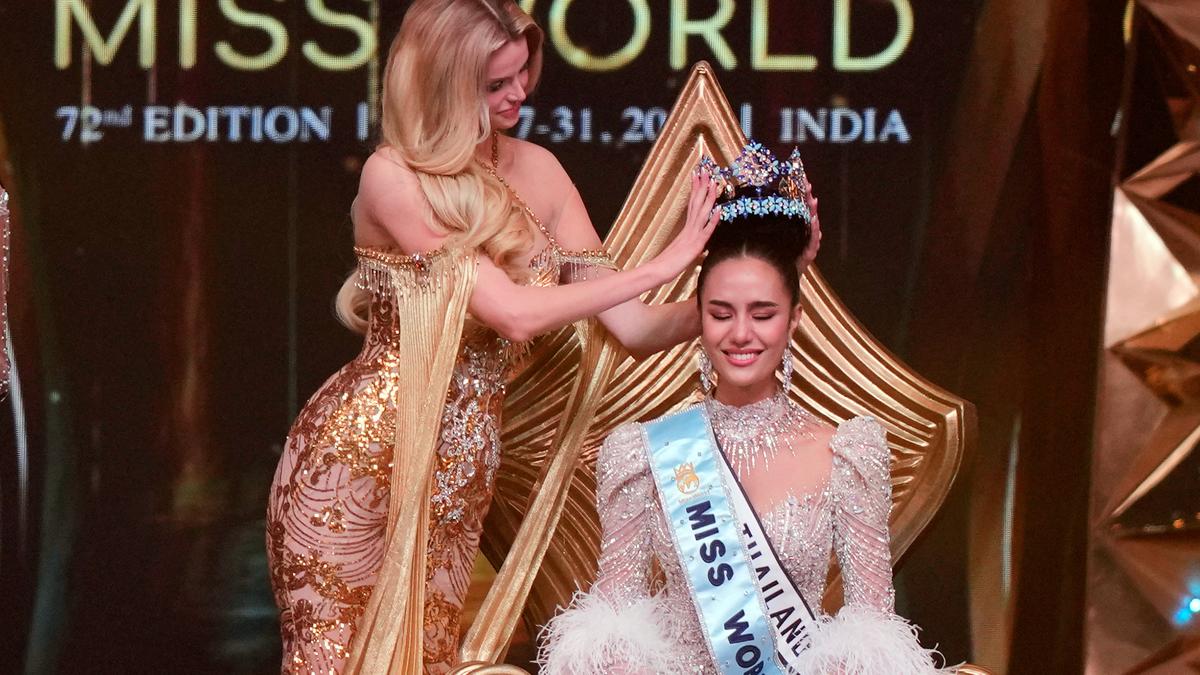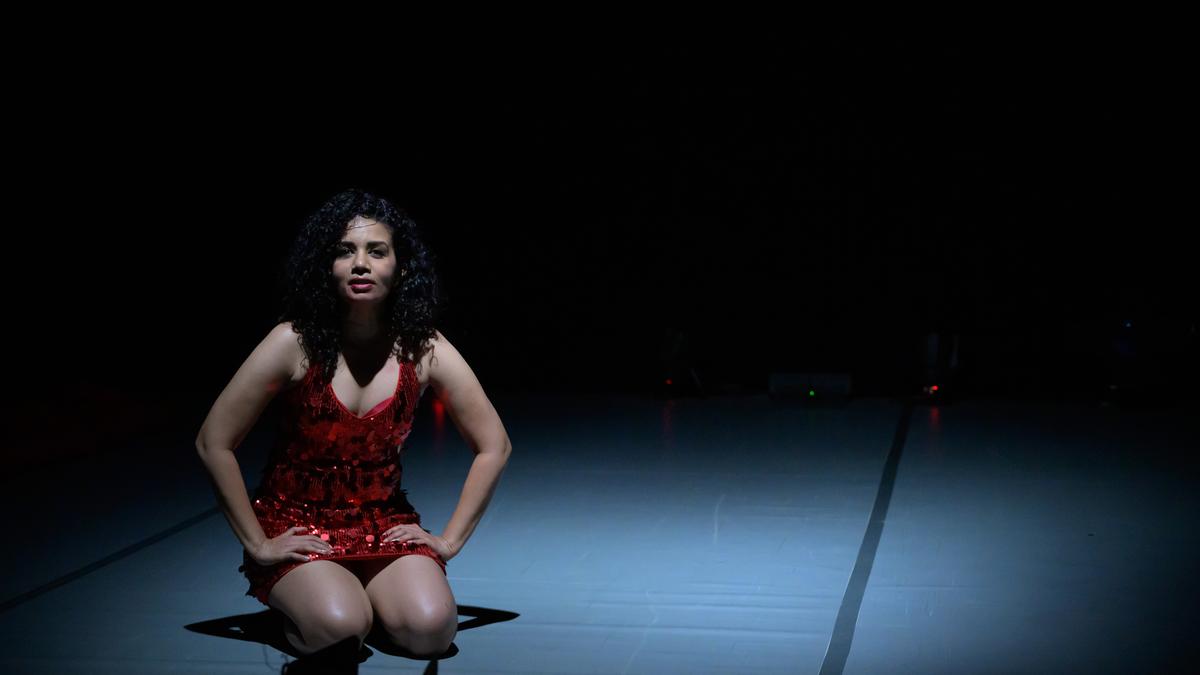[ad_1]
Last year saw several narratives around textile, helping transform them into powerful tools of inquiry into cultural identity and sustainability. Exhibitions such as When Indian Flowers Bloomed in Distant Lands (on view in Ahmedabad until March) highlighted the political and economic importance of textiles in India’s global trade, while From Folk to Fibre — featured at the ‘Journeying Across the Himalayas’ festival in December under the Royal Enfield Social Mission — celebrated the myths, stories, and social bonds woven into textiles from nine Himalayan regions.
Reimagined by a new wave of artisans, designers, and craftspeople, these showcases challenged traditional biases in textile storytelling, offering unique perspectives on social, environmental and cultural concerns.
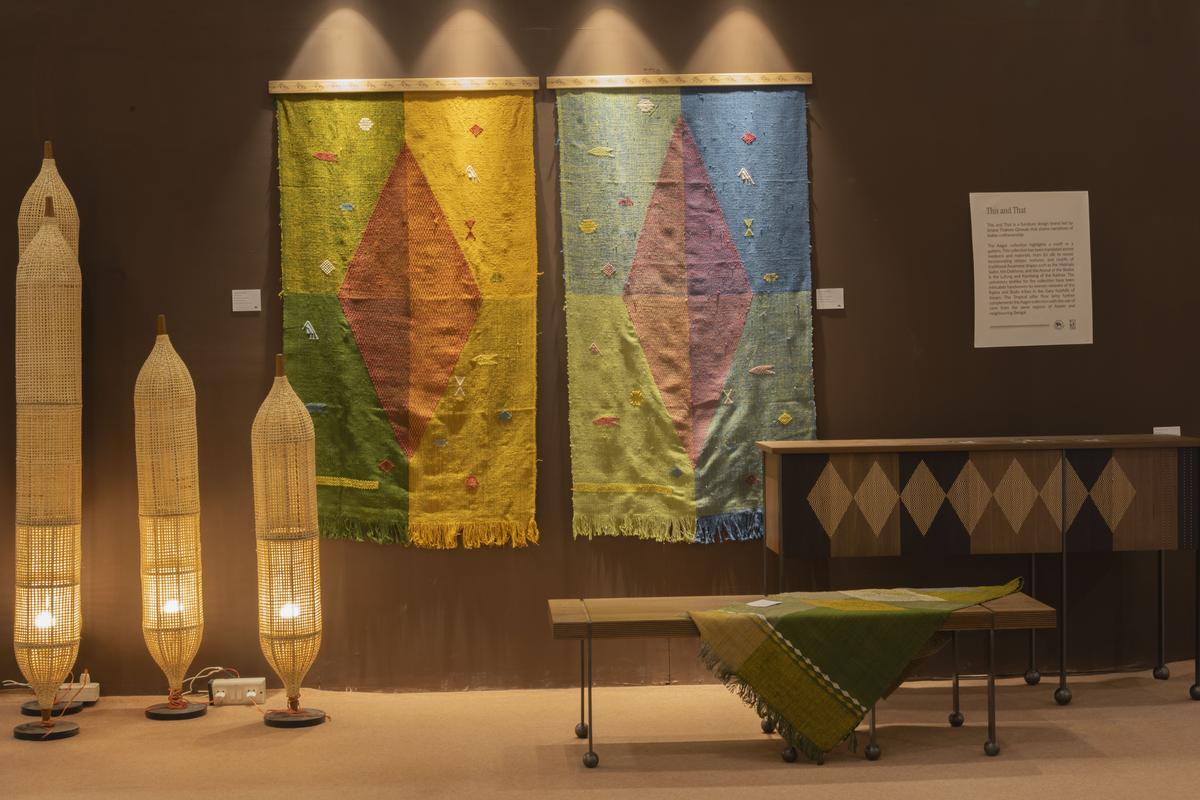
Wall hangings, upholstery textiles and pillar floor lamps by This and That, a furniture design brand led by Ariane Thakore Ginwala
Themes of community and empathy
Sense and Sensibility, a showcase by Bengaluru-based research and study centre The Registry of Sarees (TRS) at last month’s Raw Collaborative exhibition in Gandhinagar, invited viewers to see textiles not just as objects, but as extensions of identity, prompting reflections on personal and collective narratives. Ahalya Matthan, founder of TRS, describes it as “an exploration of human interactions”.
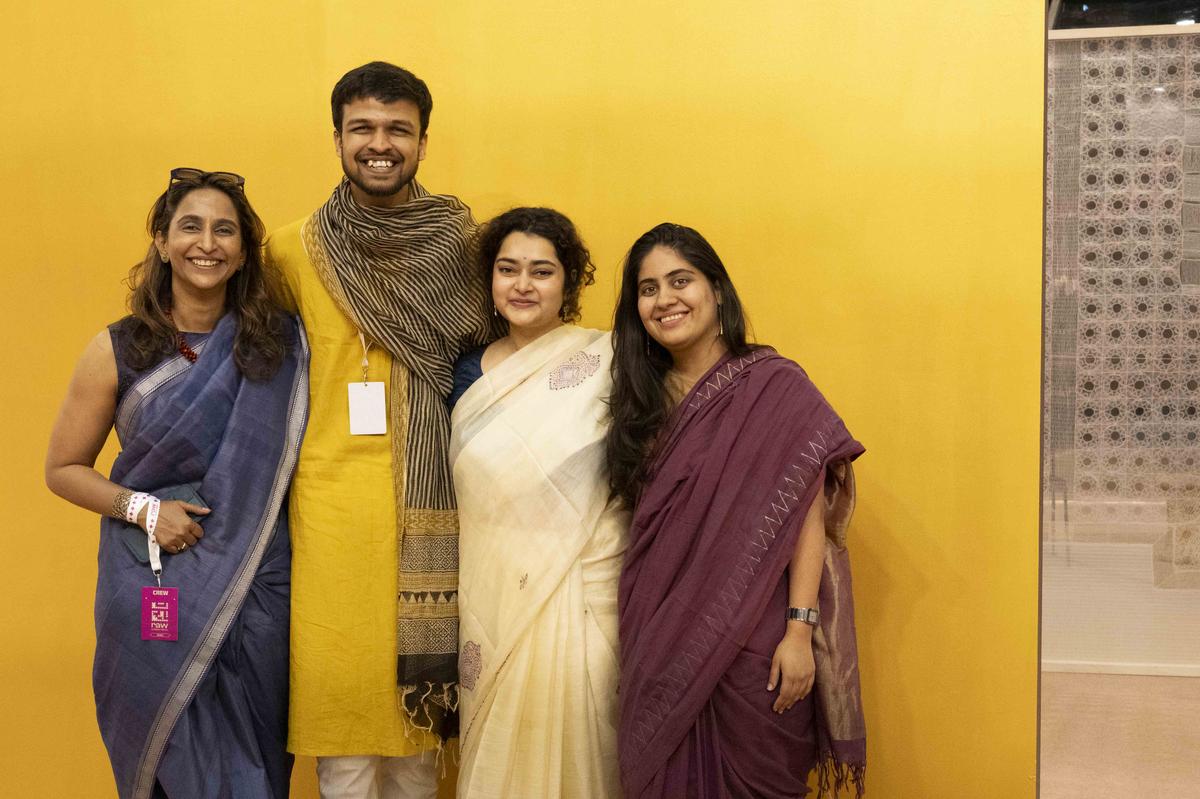
(L_R) Ahalya Matthan with Vishwesh Surve, Radha Parulekar and Aayushi Jain
She adds, “There is a divisiveness [between art and craft], though it isn’t always acknowledged. Exhibitions like this place the onus on us to tell the story inclusively, highlighting not just craft, art, and design, but the people behind them — their processes, materiality, and skill.”
Curated by textile designers and researchers Aayushi Jain, Vishwesh Surve, and Radha Parulekar, the exhibition breaks from academic rigour to explore themes of community, empathy, and collective identity. Textile history is often shaped by academicians and experts, while the vernacular voices, particularly those of contemporary stakeholders such as weavers and designers, remain largely sidelined. By amplifying these perspectives, TRS aims to build a knowledge registry that addresses the environmental, economic, and sociological challenges textiles present in modern life.
Nearly 100 works from 36 designers, artists, darners, collectors and community-led initiatives participated, the works on display tracing a continuum of influences: from industrialisation and Art Deco to Bauhaus, minimalism, sustainability, and technology. Be it monochrome ikat, brocade and jamdani artworks by designer duo David Abraham and Rakesh Thakore, Kutchi torans from collector Salim Wazir’s private collection, heirloom Banarasi brocades showcased at the Festival of India exhibitions in the 1980s and 90s, Toda embroidery from the pastoral people of Nilgiris, or 17th-19th century carpets from Iran and Iraq from Bengaluru-based collector Danny Mehra’s collection.
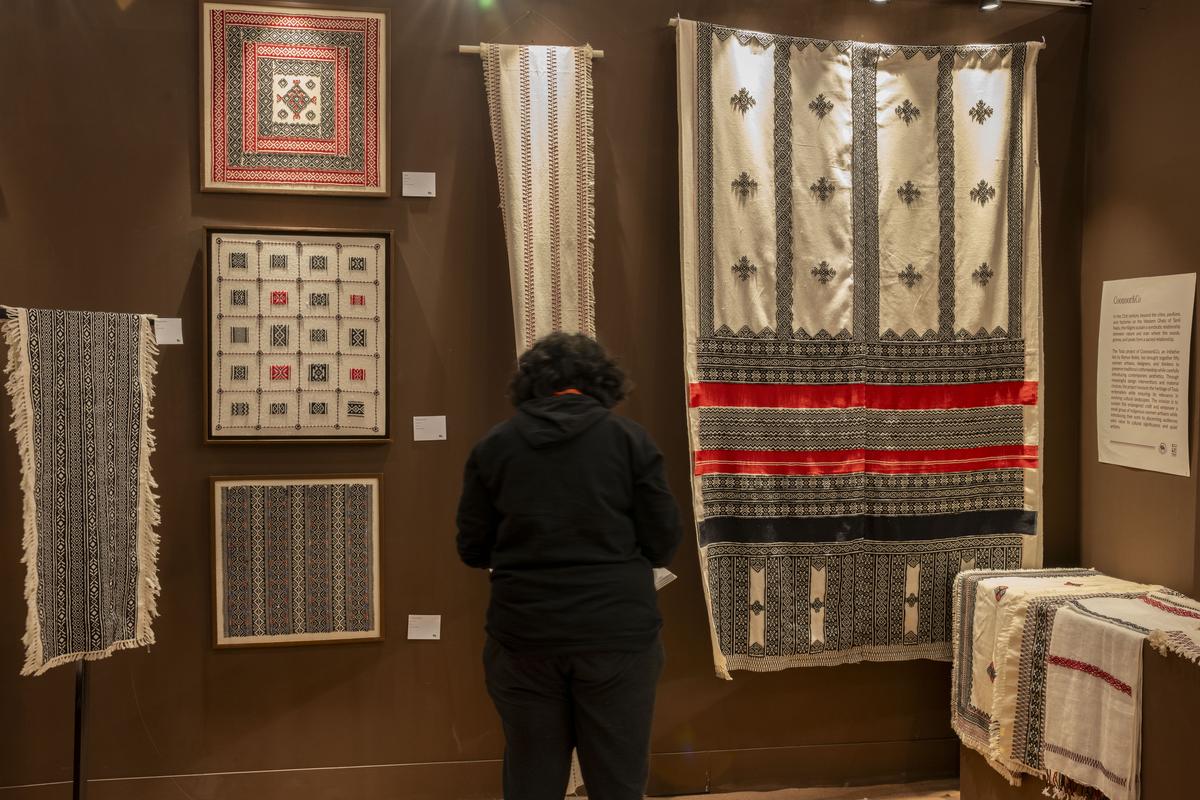
A series of works with Toda embroidery, presented by Coonoor & Co

“Even 76 years after independence, we’re still grappling with questions of identity. Authenticity starts with understanding who we are. Only then can we address the deeper issues that textiles, craft, and art present — not just aesthetics, but the human connections they foster. Every textile cluster embodies the desire to connect; to share who they are and where they come from.”Ahalya Matthan The Registry of Sarees
Breaking conventional divisions
The emotional resonance of textiles was seen in the juxtaposition of two works. Naye Mein Purana by Vankar Vishram Valji and Between Indigo and Light by textile designer Chinar Farooqui’s brand Injiri. The former, “an intricate piece woven from handspun cotton, kala cotton, tussar silk, desi oon, merino wool, and acrylic yarn, reflects the Valji family’s deep-rooted weaving tradition in Kutch”, says Dinesh, one of the four sons of the National Award-winning craftsman, and who dedicated 25 days to weaving the piece. On the adjacent wall, Farooqui combined art and architecture through indigo, sheer jamdani panels, and a contemporary take on the mehrab motif, traditionally found on the walls of mosques.
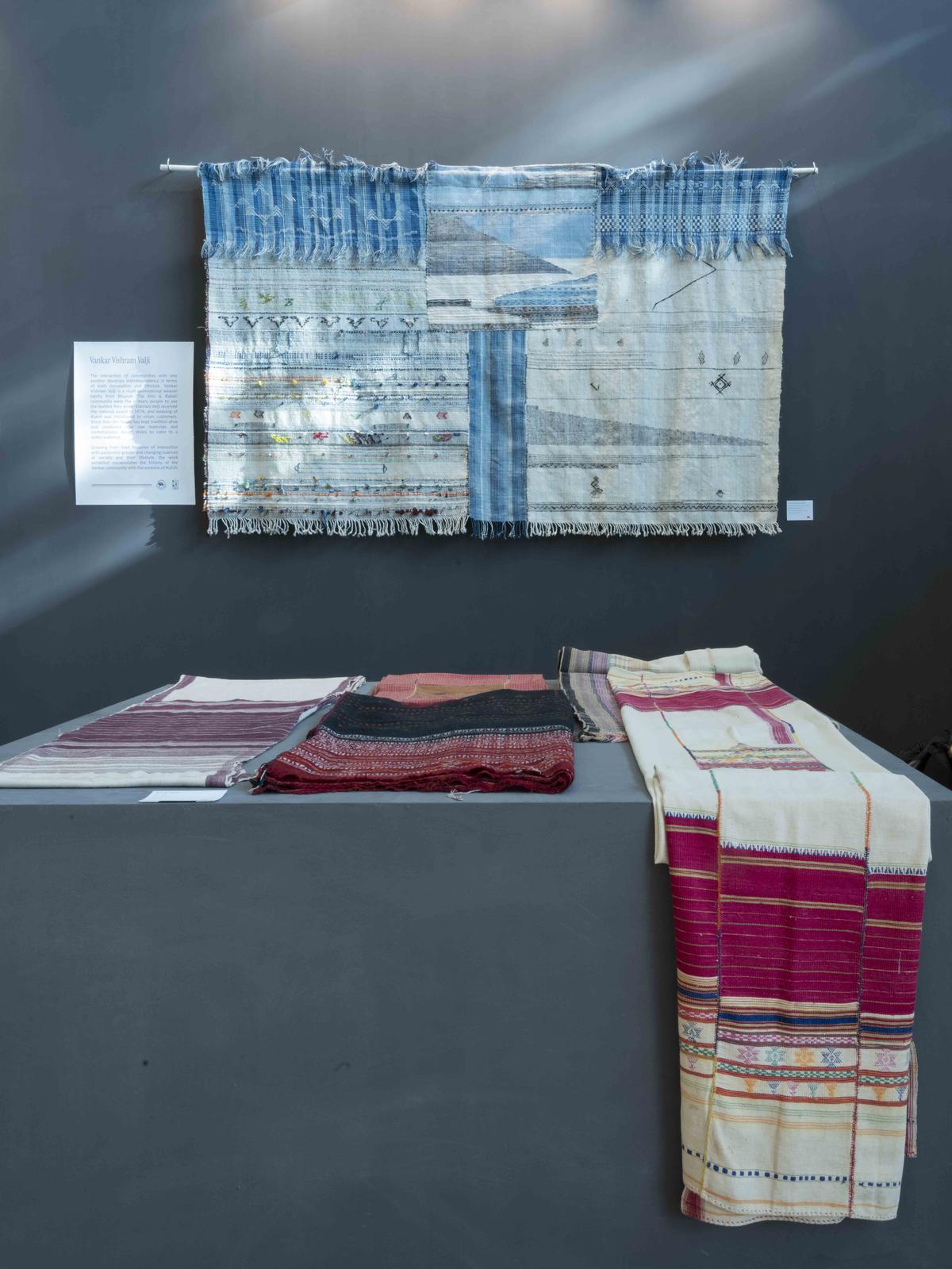
Naye Mein Purana by Vankar Vishram Valji
The two installations — one by a craftsperson, the other by a designer — represented distinct social and creative experiences. And the proximity of the works, particularly given that Farooqui has collaborated with the Valji family to develop textiles for her brand, broke down the conventional divisions between designer and craftsperson. “A designer [who knows how to sell] bridges the gap between the market and the craftsperson, who often lacks that market-facing approach,” says Dinesh. Farooqui adds, “Design and craft must merge — we can’t do without each other.”
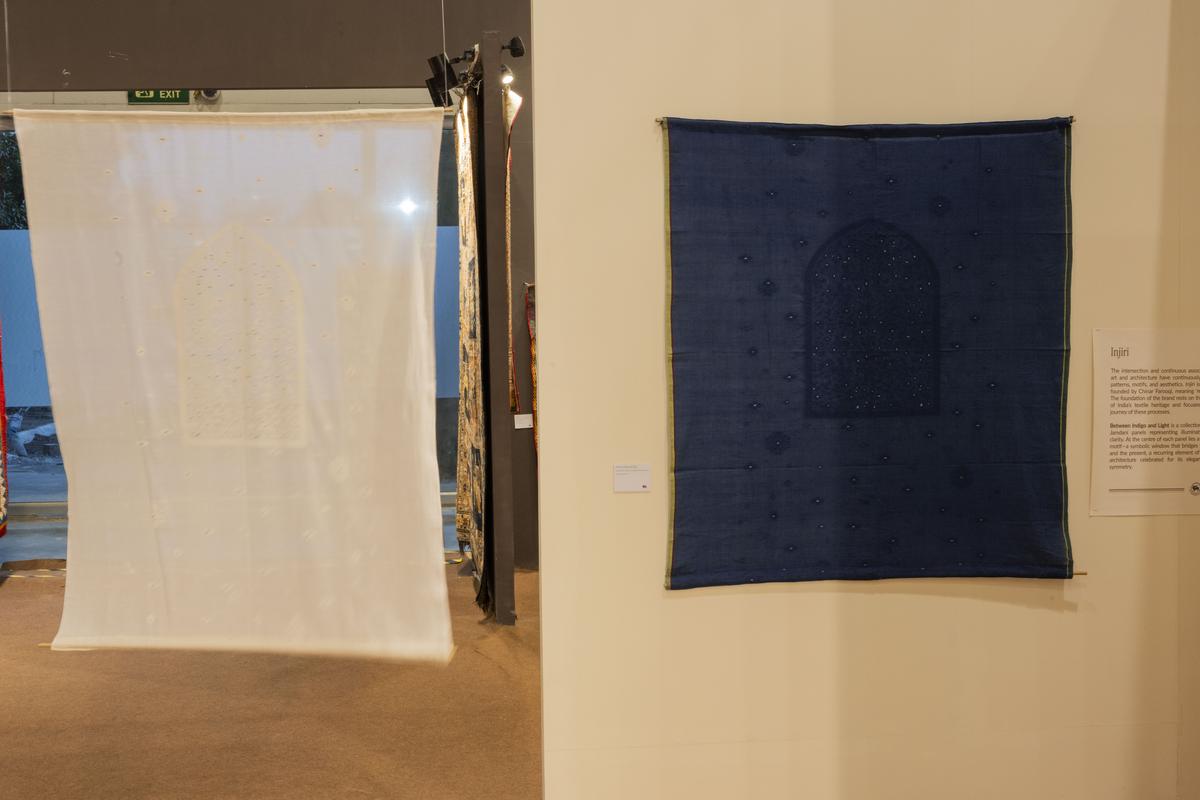
Between Indigo and Light by Injiri
As Shama Pawar, founder of Kishkinda Trust (which promotes cultural industries and creative economies in Anegundi-Hampi) explains, the myth of craft-making is changing. “People are taking more liberties; it’s about creating partnerships that inspire.” Her own installation, The Shuttle of Time, crafted from banana fibre and ilkal pallu yarn, symbolised the fragile balance between heritage and the future.
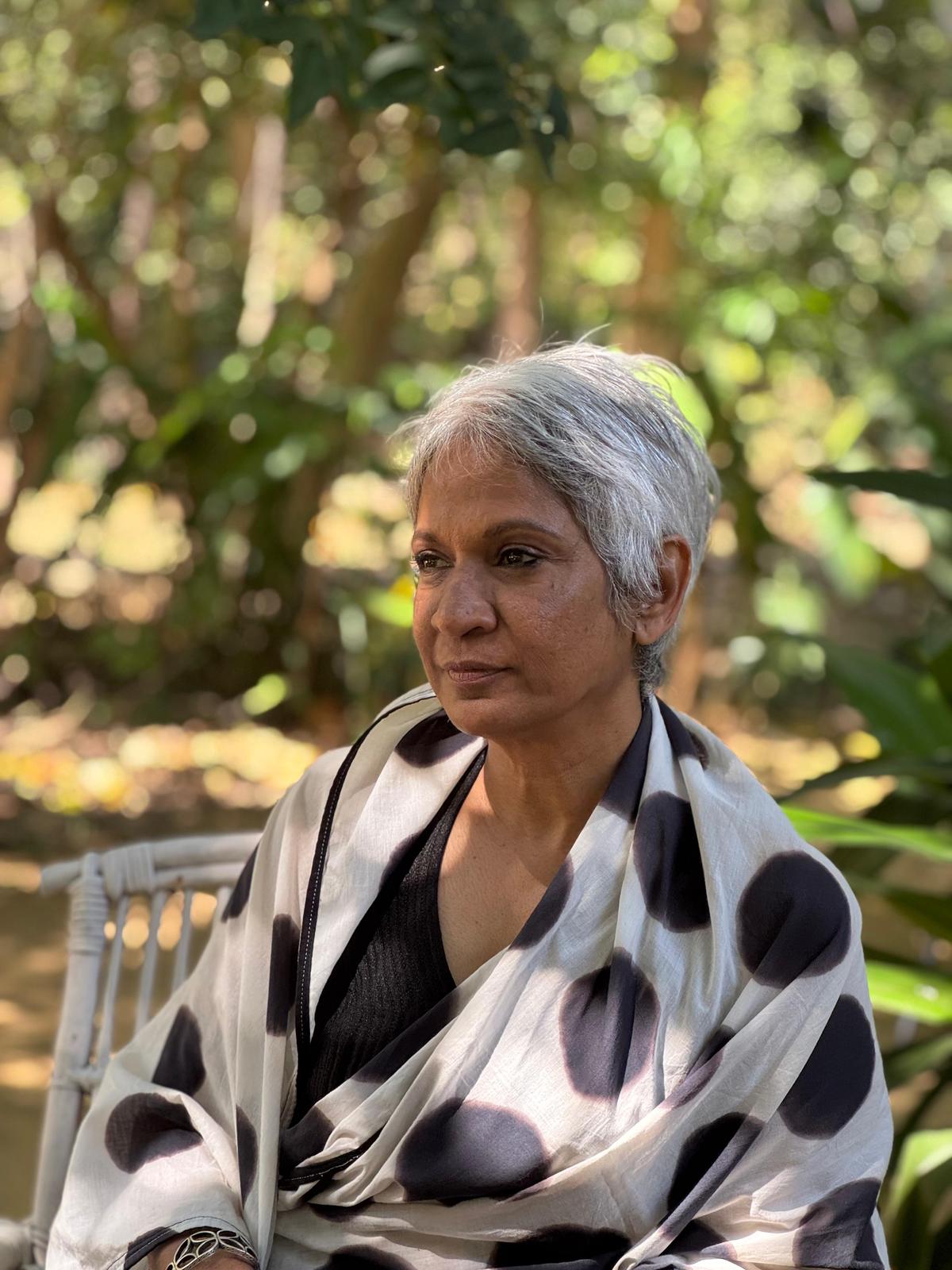
Shama Pawar
A cultural exchange
Rather than framing India’s crafts as relics of colonial plunder, the narrative is evolving into a dynamic, ongoing cultural exchange between rural and urban practitioners, craft and commerce, and the past and the present. “I question how much we should revere craft or freeze it in time,” states Mala Pradeep Sinha of Vadodara-based Bodhi design studio. “For craftspeople, it’s about responding to the market. If change is needed, so be it. So why are we, the so-called experts, trying to impose a narrative that suits us?”
This thinking translated into Sinha’s QR Code Quilt, a striking black-and-white wall hanging made from upcycled block-printed scraps. “Quilt-making isn’t just about stitching fabric together; it’s about bringing people together to share conversations, tiffin, and ideas. That bond fosters empathy — and without empathy, you can’t work creatively.”
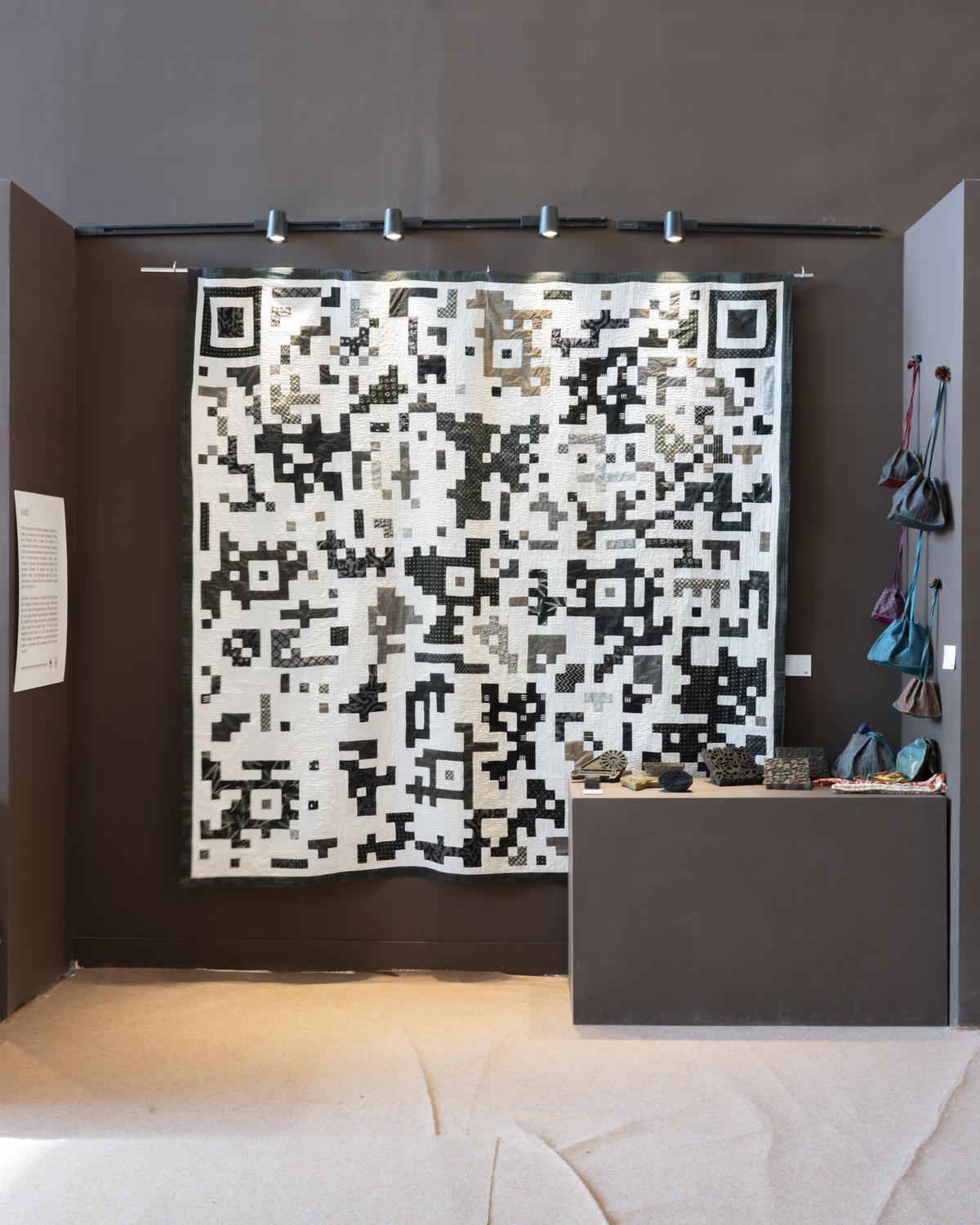
Mala Pradeep Sinha’s QR Code Quilt
Sustainability and community were also central to the work of Jagriti Phukan, based in Dhemaji, Assam. Her textile piece, Inheritance of Nature, created from long strands of matted, handspun muga and eri silk, expressed the symbiotic relationship between heritage, tradition, folklore, and nature.
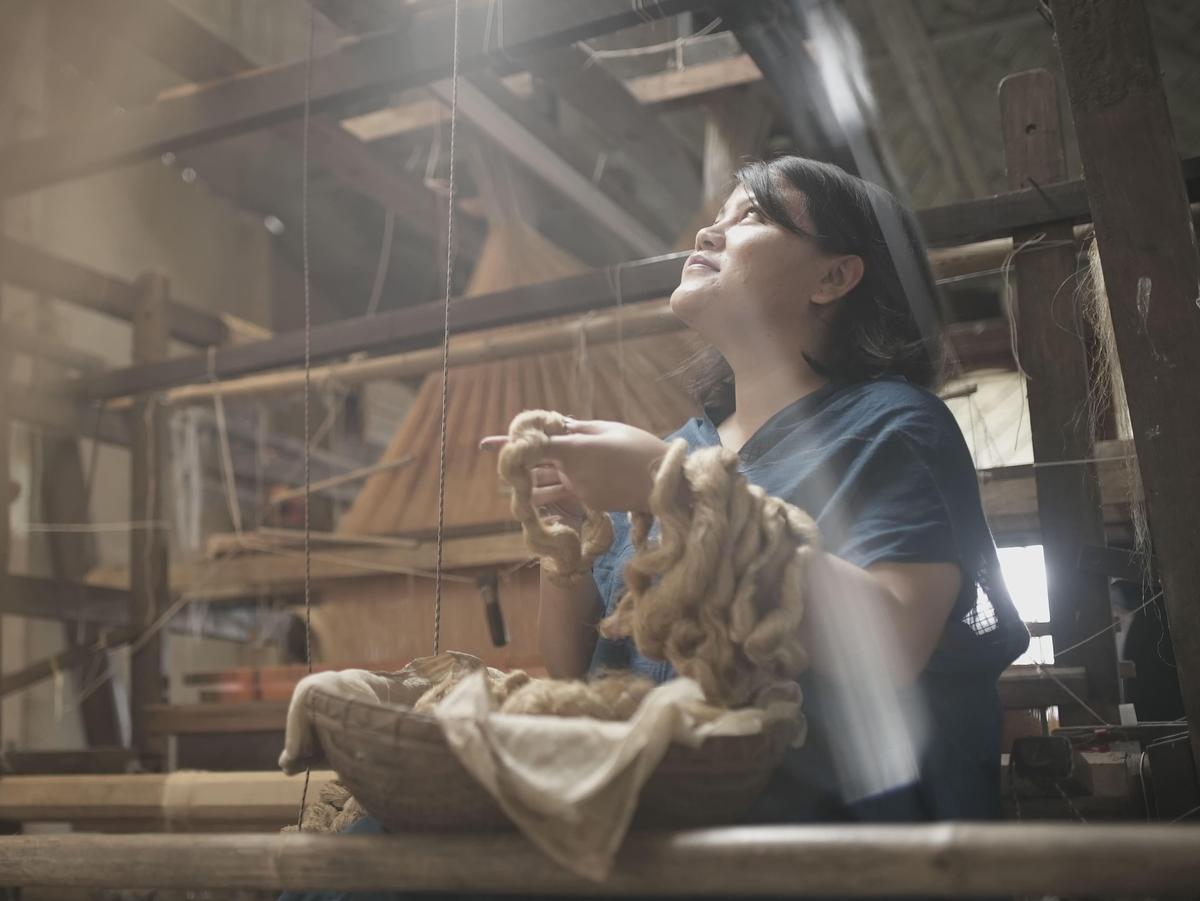
Jagriti Phukan
Textiles and fibre-based art are more complex than people often think. As Aratrik Dev Varman, the founder-designer of Ahmedabad-based Tilla studio, puts it, they are about “intent and exploring personal expression”, and not just creating for the market. “Exhibitions like Sense and Sensibility are crucial for mapping India’s evolving textiles and crafts before they’re lost,” he concludes, stressing the designer’s role in influencing and recording change.
Set to travel the country
Sense and Sensibility is part of an extensive study on the ‘History of Design in India through Textiles’, tracing its evolution from the 19th century to the present. The research, which delves into the materials, skills, and processes of diverse textile stakeholders, will continue at The Registry of Sarees until 2026, with both an exhibition and a publication to follow. As the exhibition travels across India and internationally, it will evolve, incorporating fresh voices and perspectives, ensuring the project remains a dynamic and living testament to India’s ever-changing textile design history.
The writer is a columnist and critic, with a keen focus on fashion, textiles, and culture.
Published – January 10, 2025 12:56 pm IST
[ad_2]
Source link


